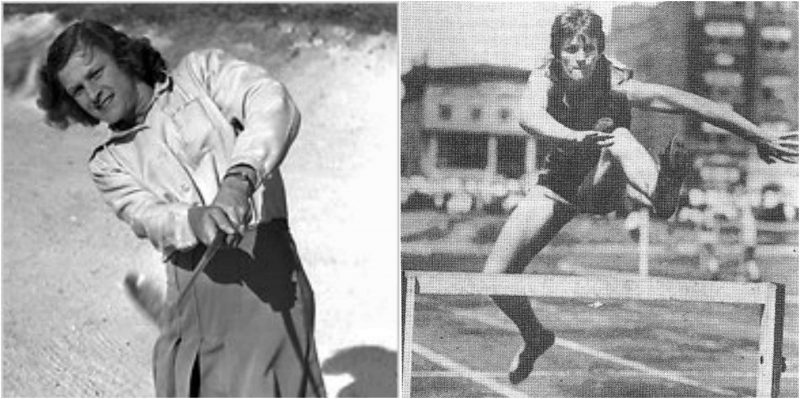Mildred Didrikson Zaharias was born June 26, 1911, and earned her nickname ‘Babe’ by hitting five home runs in one childhood baseball game.
At the 1932 Olympics, she won medals in the hurdles, javelin throw and high jump. By the 1940s, she was the greatest woman golfer of all time.
The Associated Press declared Babe Zaharias to be the “Woman Athlete of the Half Century” in 1950.
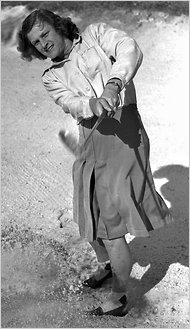
Beating the neighborhood boys
Didrikson was born into a Norwegian immigrant family on the Gulf Coast of Texas. After spending her youth beating the neighborhood boys in pickup sports games, she became a standout performer on her high school’s basketball, baseball, volleyball, tennis, golf and swimming teams.
At age 18, her skills caught the eye of the Employers Casualty Insurance Company, which convinced her to quit school and play for its women’s basketball team in the Amateur Athletic Union.
It wasn’t long before the brash and boastful Babe had staked a claim as the league’s top forward. She led her team in scoring during her debut game and was selected as an all-American for three straight years from 1930 to 1932.
One-girl track team won five events
Didrikson’s first taste of national celebrity came in 1932 when she took part in the U.S. women’s track and field championships as the lone member of the Employers Casualty team.
While the other teams each fielded a dozen or more athletes, Babe single-handedly competed in eight events ranging from the hurdles and the broad jump to the shot put and the discus throw, often finishing one heat and then immediately rushing to the starting line of another.
Despite the obvious disadvantages of being a “one-girl track team,” she won five events and amassed enough points to claim the championship.
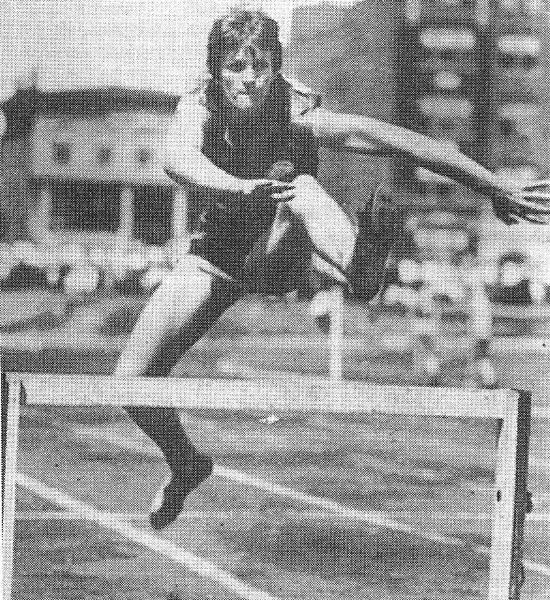
“The most talented athlete, male or female, ever developed in our country”
Following her breakthrough at the track and field nationals, Didrikson participated in the 1932 Los Angeles Olympics in three events: the javelin, the 80-meter hurdles, and the high jump.
Women were allowed to enter only three events, but she broke four world records; she won the javelin throw, with 143 feet, 4 inches, and won the 80-meter hurdles, twice breaking the previous world record (her best time was 11.7 seconds). She made a world record high jump, but the jump was disallowed and she was awarded second place.
World’s Greatest Woman Athlete
Didrikson emerged from the Los Angeles Olympics as a celebrity sportswoman, but a lack of opportunities for female athletes forced her to seek employment on the vaudeville circuit.
Billing herself as the “World’s Greatest Woman Athlete,” she toured Chicago and New York with a variety show that included singing, harmonica playing and sports-related stunts such as hitting plastic golf balls into the crowd.
During an era when most women were making mere cents an hour, the wildly popular performances earned her as much as $1,200 per week.
Babe: “Golf is a game of coordination, rhythm and grace”
By 1935, she began to play golf, a latecomer to the sport in which she became the most famous.
Shortly thereafter, she was denied amateur status, and so, in January 1938, she competed in the Los Angeles Open, a men’s PGA (Professional Golfers’ Association) tournament, a feat no other woman tried until Annika Sorenstam, Suzy Whaley, and Michelle Wie almost six decades later.
She shot 81 and 84 and missed the cut. In the tournament, she was teamed with George Zaharias. They were married eleven months later, and lived in Tampa, Florida, on the premises of a golf course that they purchased in 1951.
She went on to become America’s first female golf celebrity and the leading player of the 1940s and early 1950s. Didrikson’s outsized ego often grated on her fellow golfers — she was fond of informing them that they were all playing for second — but she backed up her boasts with results.
Between 1946 and 1947, she won 14 golf tournaments in a row, often annihilating her opponents in match play.
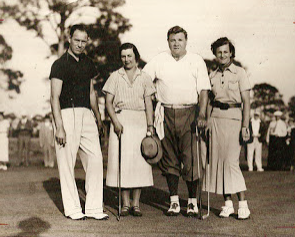
She was a founding member of the LPGA
Didrikson dominated women’s golf in the late-1940s and eventually turned pro, but she was hampered by a meager tournament schedule that included only a half-dozen events per year.
In 1950, with the help of corporate sponsors, she and twelve other female golfers formed a new pro tour called the Ladies Professional Golf Association, or LPGA.
Didrikson caused a controversy within the LPGA by demanding a special appearance fee of $1,000 per tournament, but her celebrity helped grow the fledgling tour, which went on to triple its prize money in its first five years.
Didrikson won her last major golf tournament while suffering from terminal cancer
Zaharias had a cancer operation in April 1953, and it was feared she would never be able to return to competition. Three and a half months later, though, she played in competition. The next year she won the United States Women’s Open by twelve strokes.
In 1955 she had a second cancer operation. She died in Galveston, Texas at the age of 45. In the last months of her life, she and her husband established the Babe Didrikson Zaharias Fund to support cancer clinics and treatment centers.
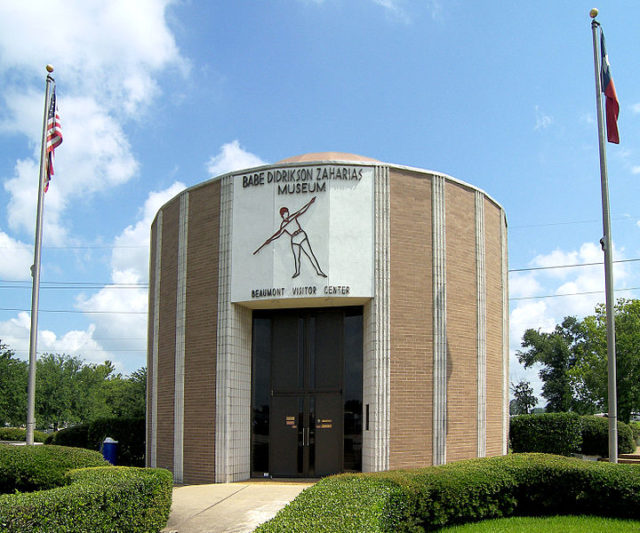
Zaharias was the greatest woman golfer of all time, the winner of seventeen successive golf tournaments in 1946-1947, and of 82 tournaments between 1933 and 1953.
The Associated Press voted her “Woman of the Year” in 1936, 1945, 1947, 1950, and 1954. In 1950 the AP acclaimed her the “Woman Athlete of the Half Century.”
The skinny, shingle-headed teenager, a shy and socially immature girl who could win at sports but usually antagonized her fellow competitors, became a poised, well-dressed, graceful and popular champion, the darling of the galleries, whose drives whistled down the fairways and whose comments won the hearts of the spectators.
